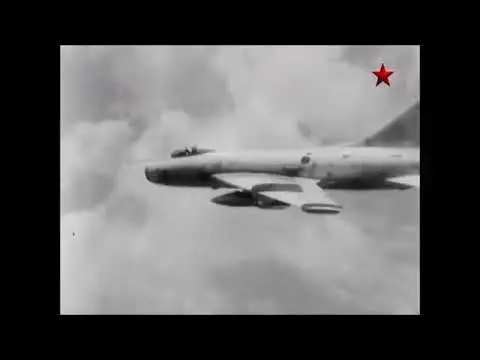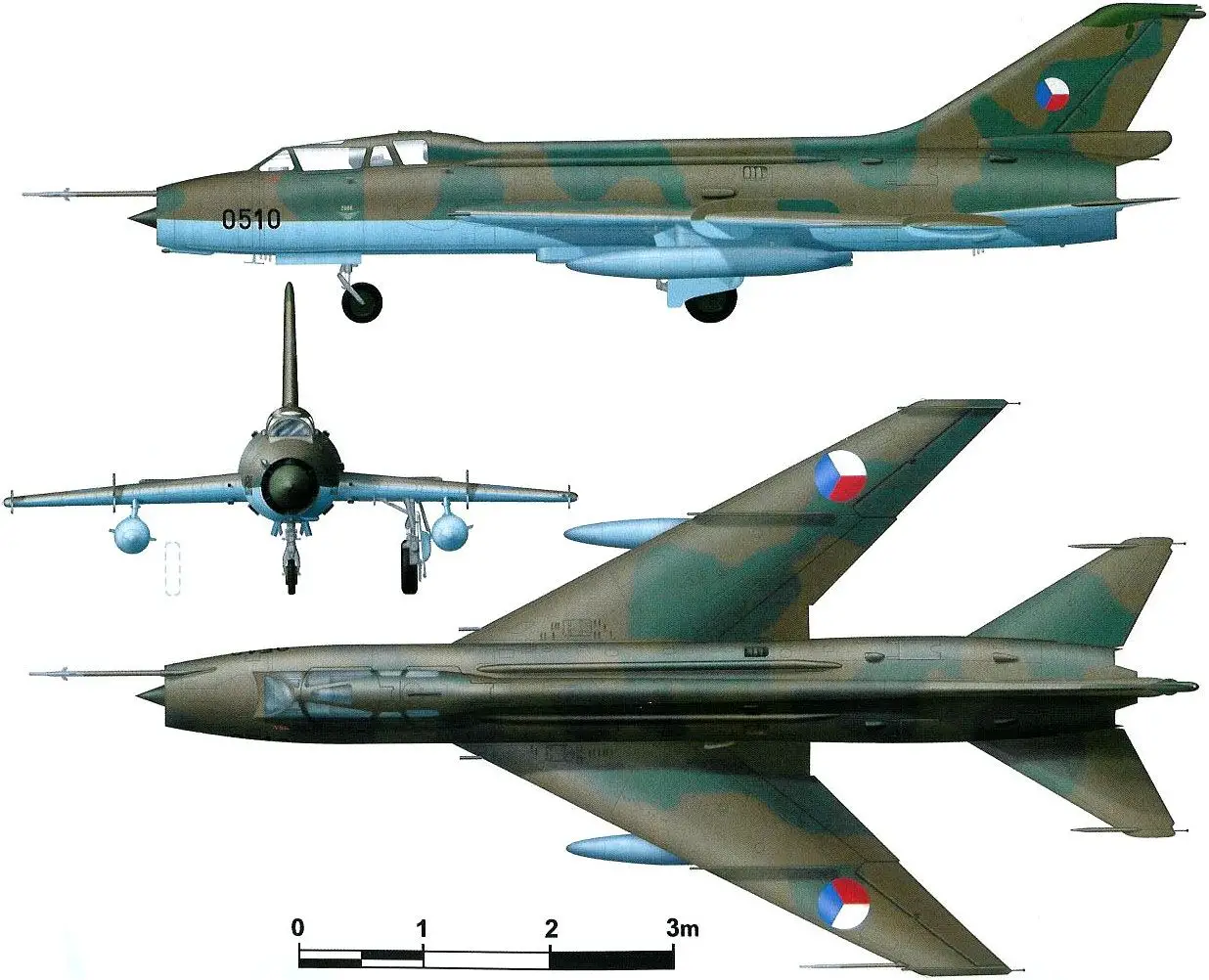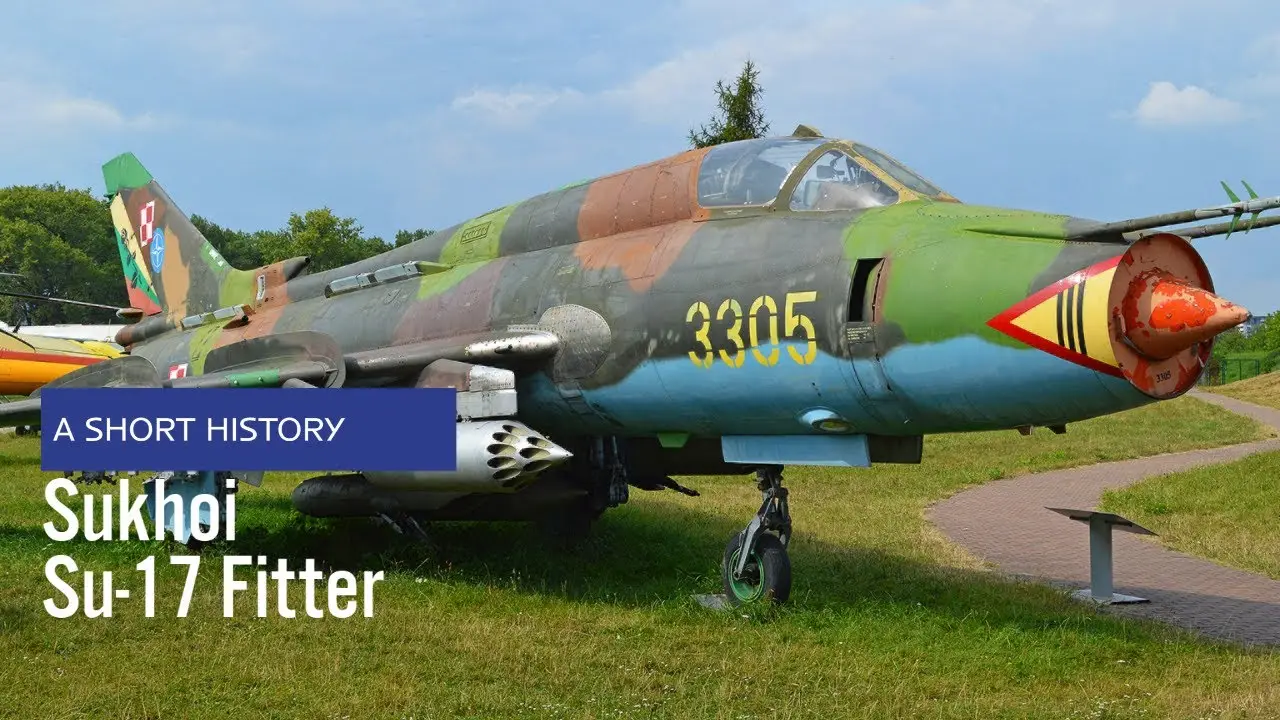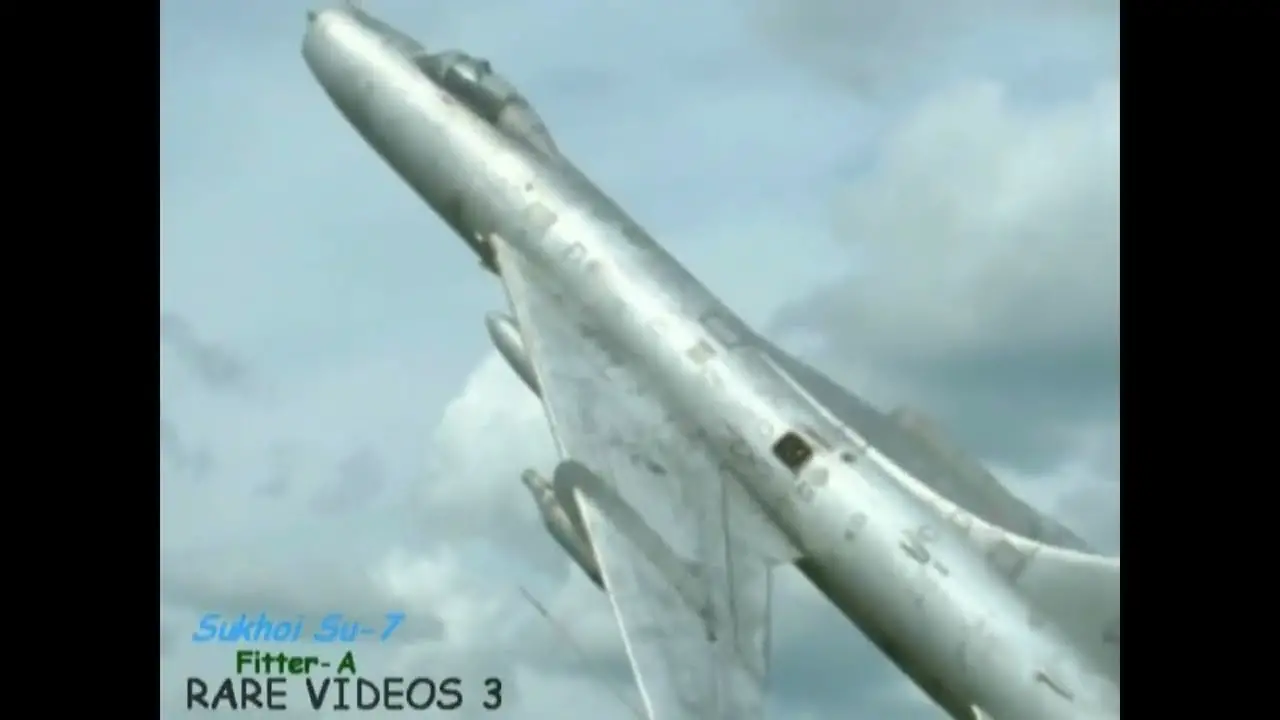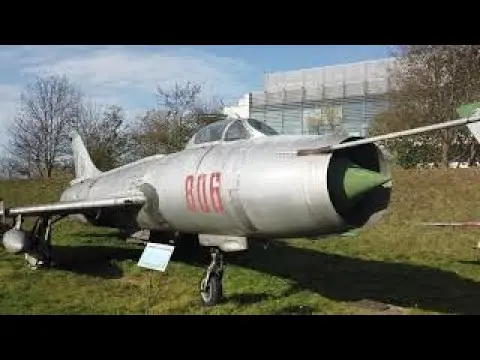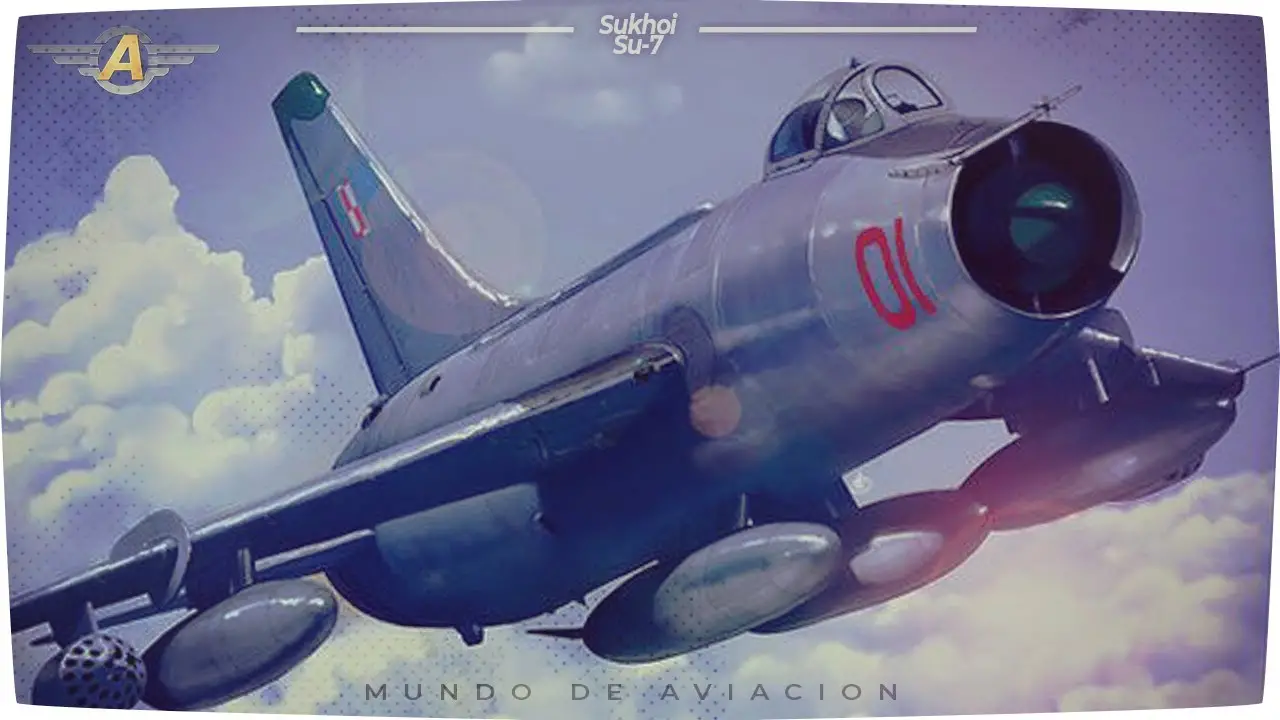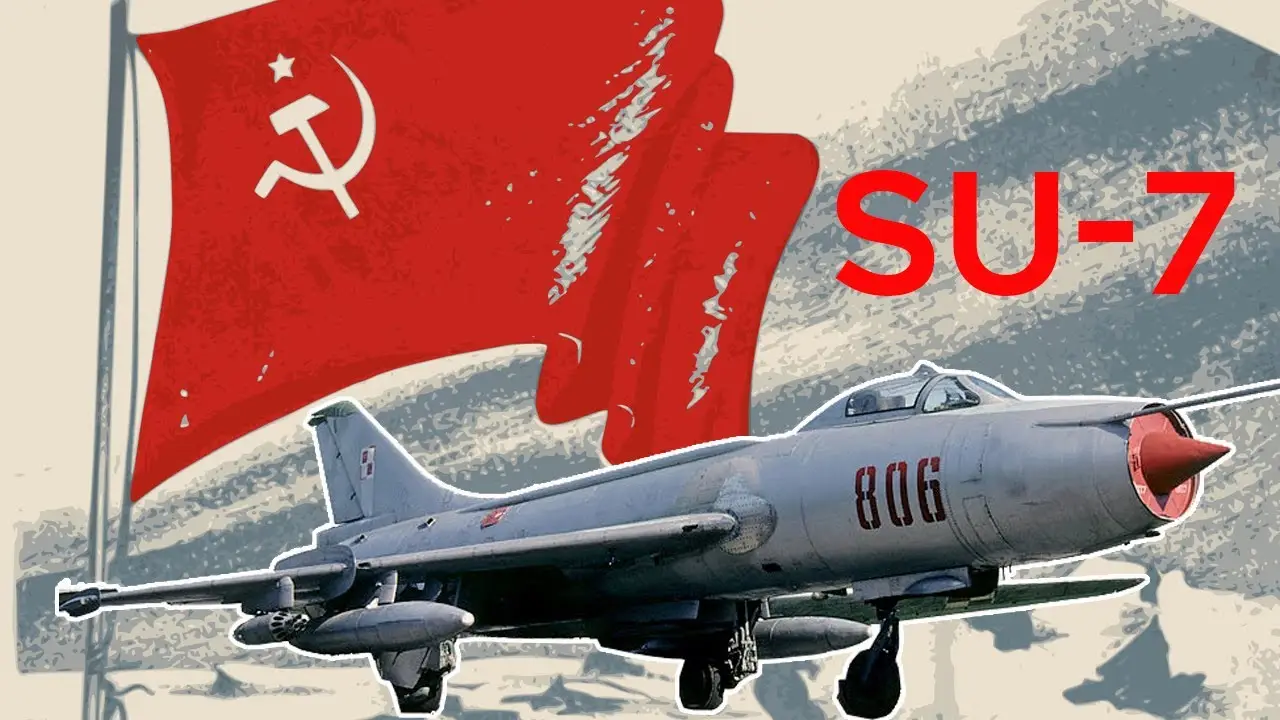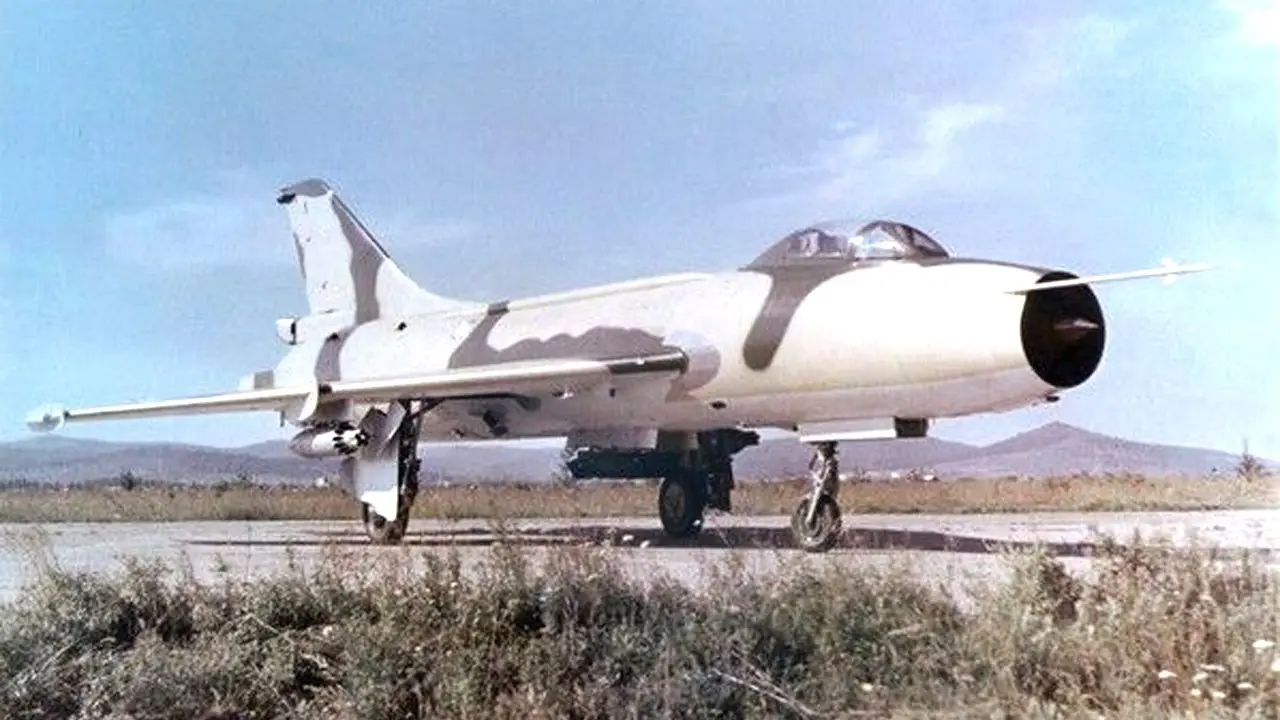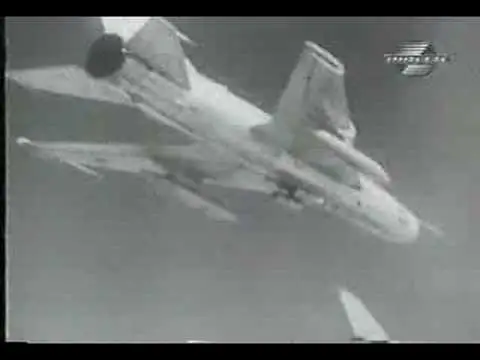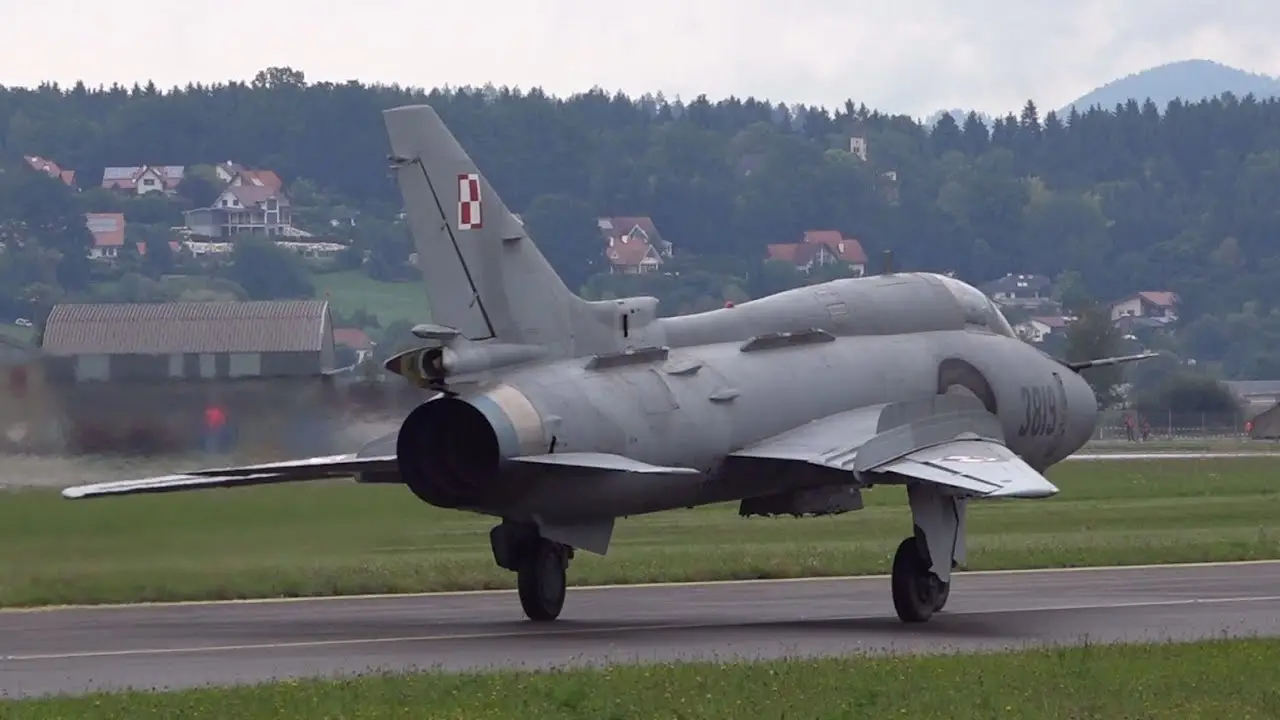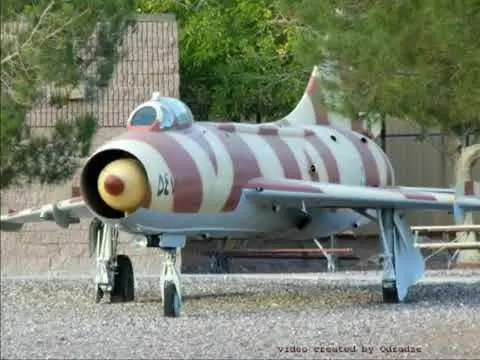Sukhoi Su-7 Fitter Operational History and Legacy
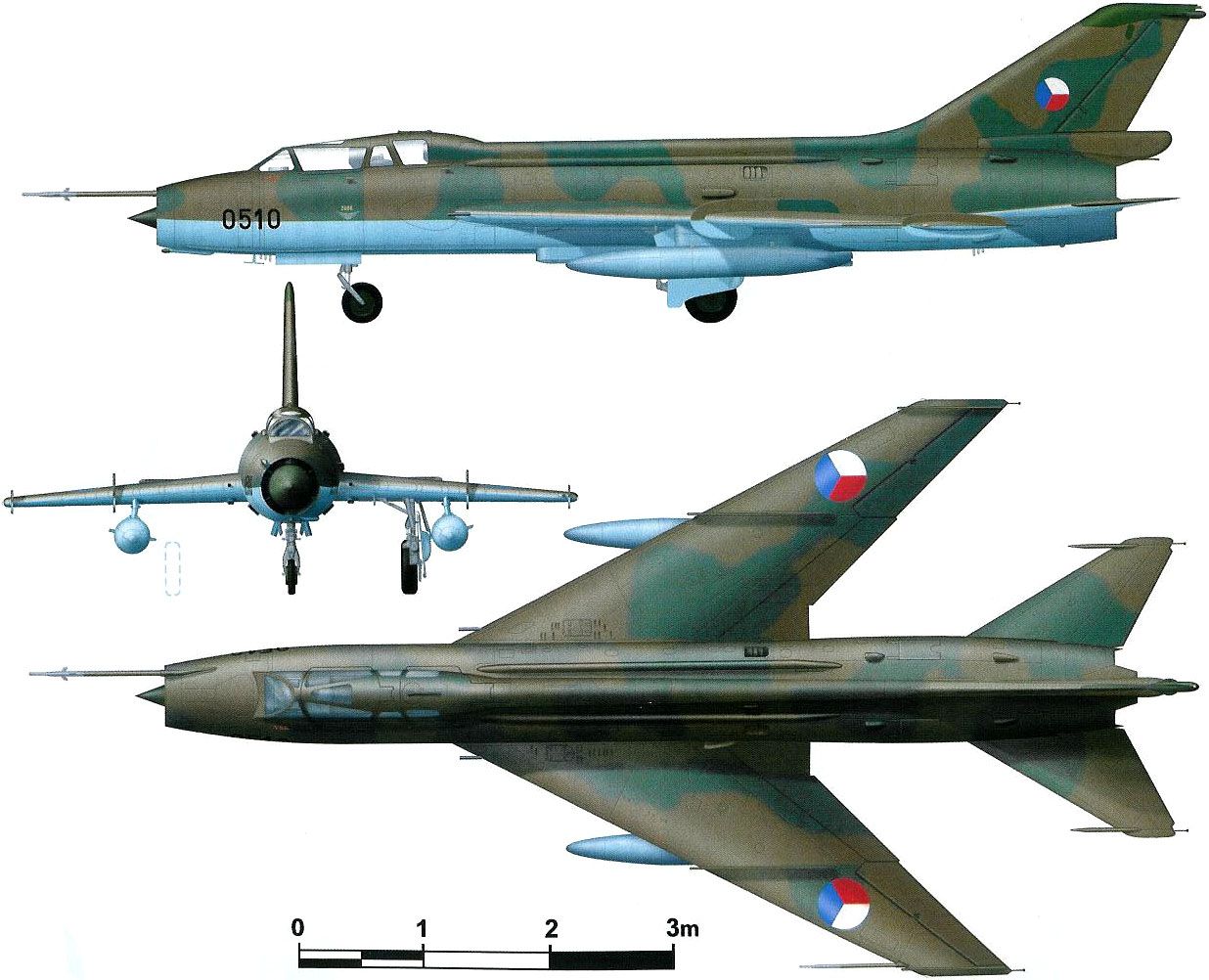
The Sukhoi Su-7 Fitter was a supersonic, single-seat, single-engine fighter jet developed and operated by the Soviet Union from 1959 to 1995. Designed to fulfill the role of a tactical ground-attack aircraft, the Su-7 was known for its impressive performance and armament, which made it a formidable weapon on the battlefield.
Introduction to Sukhoi Su-7 Fitter
The Sukhoi Su-7 Fitter was developed as a successor to the Su-9 Fishpot interceptor, with a focus on ground-attack capabilities. The aircraft featured a sleek design, powered by a powerful Lyulka AL-7F turbojet engine that enabled it to reach speeds of up to Mach 1.17. With its impressive climb rate and heavy armament, the Su-7 quickly became a staple in the Soviet Air Force’s arsenal.
Design and Development of Sukhoi Su-7 Fitter
The origins of the Su-7 can be traced back to the Su-9 (Fishpot), a supersonic interceptor developed by Sukhoi in the late 1950s. Recognizing the need for a dedicated ground-attack aircraft, Sukhoi modified the Su-9’s design, resulting in the Su-7. The main modifications included a strengthened fuselage, redesigned air intakes, a revised wing planform, and the incorporation of a powerful armament suite.
Specifications of Sukhoi Su-7 Fitter
Here are the specifications of the Sukhoi Su-7 Fitter:
| Specification | Details |
|---|---|
| Engine | Lyulka AL-7F turbojet |
| Thrust | 17,600 pounds with afterburner |
| Top Speed | Mach 1.17 (1,470 km/h) |
| Climb Rate | 57,100 feet per minute |
| Length | 62.5 feet (19.3 meters) |
| Wingspan | 30.3 feet (9.3 meters) |
| Height | 15.8 feet (4.8 meters) |
Variants of Sukhoi Su-7 Fitter
Several variants of the Su-7 were produced throughout its service life, each with unique features and enhancements. Some of the notable variants include:
- Su-7B – Initial production variant with limited ground-attack capabilities.
- Su-7BM – Improved version with upgraded avionics and radar systems.
- Su-7BKL – Variant equipped with K-36 ejection seat for improved pilot safety.
- Su-7BMK – Export variant of the Su-7BM for Warsaw Pact countries.
The evolution of the Su-7 through these variants showcased the adaptability and versatility of the aircraft in meeting the changing demands of modern warfare.
Operational History of Sukhoi Su-7 Fitter
The Su-7 Fitter saw extensive combat action during various conflicts, including the Vietnam War, where it was used by North Vietnamese forces against American aircraft. Its speed and agility made it a challenging target for enemy pilots, and its ground-attack capabilities were instrumental in providing close air support to friendly troops.
Despite its success in combat, the Su-7 also faced challenges, particularly in terms of maintenance and reliability. The harsh operating conditions in conflict zones often took a toll on the aircraft, leading to higher than average attrition rates.
In addition to its combat roles, the Su-7 was also utilized for reconnaissance missions, thanks to its high-speed capabilities and maneuverability. Its ability to operate at low altitudes made it well-suited for gathering intelligence behind enemy lines.
The operational history of the Su-7 is a testament to its durability and effectiveness in a wide range of mission profiles, solidifying its reputation as a reliable workhorse for the Soviet Air Force.
F16 Fighter Aircraft An In-Depth Exploration of an American Legend
Evolution of Fighter Aircraft From Early Jets to Advanced Tech
Sukhoi Su-7 Fitter in Popular Culture
The Sukhoi Su-7 Fitter has made appearances in various forms of popular culture, including movies, video games, and literature. Its distinctive silhouette and reputation as a rugged ground-attack aircraft have captured the imagination of aviation enthusiasts around the world.
In movies such as “Top Gun” and “Iron Eagle,” the Su-7 Fitter is often portrayed as a formidable adversary, showcasing its capabilities in aerial combat scenarios. In video games like “Ace Combat” and “War Thunder,” players have the opportunity to pilot the Su-7 and experience its high-speed maneuvers firsthand.
Literature focusing on military aviation history often highlights the Su-7’s contributions to Cold War-era conflicts and its impact on the development of modern fighter aircraft. Its iconic status in popular culture serves as a reminder of its enduring legacy in the annals of aviation history.
Operators of Sukhoi Su-7 Fitter
The Sukhoi Su-7 Fitter was operated by several countries during its service life, including the Soviet Union, India, Egypt, and Poland. Each operator customized the aircraft to suit their specific needs, leading to variations in armament, avionics, and paint schemes.
The Soviet Air Force was the primary operator of the Su-7, deploying it in various combat theaters and using it for both ground-attack and reconnaissance missions. India acquired a number of Su-7 aircraft in the 1960s and utilized them in conflicts with Pakistan, showcasing the aircraft’s versatility in different operational environments.
Egypt and Poland also operated the Su-7, with Egyptian forces employing it in the Arab-Israeli conflicts of the 1960s and 1970s. The Polish Air Force used the Su-7 for training purposes and as a deterrent against potential adversaries in Eastern Europe.
The diverse range of operators highlights the widespread appeal and utility of the Su-7 Fitter as a multi-role combat aircraft capable of fulfilling various mission requirements.
Surviving Sukhoi Su-7 Fitter Aircraft
Despite being retired from active service, several Sukhoi Su-7 Fitter aircraft have been preserved in museums and private collections around the world. These historic aircraft serve as a reminder of the Su-7’s contribution to military aviation and allow enthusiasts to appreciate its design and engineering up close.
One notable example of a preserved Su-7 is located at the Central Armed Forces Museum in Moscow, Russia, where visitors can view the aircraft in its original livery and configuration. Other Su-7s can be found in aviation museums in India, Poland, and Ukraine, showcasing the global impact of this iconic Soviet fighter jet.
The preservation of Sukhoi Su-7 Fitter aircraft ensures that future generations will have the opportunity to learn about its role in shaping modern military aviation and appreciate the technological advancements of its time.
Introduction to F/A-18 Hornet/Super Hornet
F-16 Fighting Falcon An In-Depth Exploration
Accidents and Incidents Involving Sukhoi Su-7 Fitter
Throughout its operational history, the Sukhoi Su-7 Fitter was involved in several accidents and incidents, resulting in the loss of aircraft and, in some cases, fatalities. The high-performance nature of the Su-7, combined with the demanding missions it undertook, posed inherent risks to pilots and maintenance crews.
Incidents such as engine failures, structural malfunctions, and pilot errors contributed to the attrition rate of the Su-7 fleet across various air forces. The intense operational tempo of combat deployments also placed additional strain on the aircraft, leading to increased wear and tear over time.
Despite these challenges, the Su-7 demonstrated a remarkable level of resilience and survivability, with many instances of pilots safely ejecting from stricken aircraft or successfully landing damaged planes. Lessons learned from accidents involving the Su-7 helped improve future aircraft designs and operational procedures, enhancing overall flight safety standards.
Retirement and Replacement of Sukhoi Su-7 Fitter
As newer and more advanced aircraft entered into service, the Sukhoi Su-7 Fitter began to be phased out of frontline operations in the 1980s. The introduction of the Su-17 and Su-25 series of ground-attack aircraft provided superior capabilities in terms of avionics, weapons systems, and survivability, leading to the gradual retirement of the Su-7 from active duty.
By the mid-1990s, most remaining Su-7 aircraft had been decommissioned or relegated to secondary roles such as training or target towing. The transition to more modern platforms marked the end of an era for the Su-7, closing a chapter in the history of Soviet military aviation.
The legacy of the Sukhoi Su-7 Fitter lives on in the advancements it inspired in subsequent generations of fighter aircraft, influencing design concepts and operational tactics that continue to shape the air forces of
today.
Conclusion
In conclusion, the Sukhoi Su-7 Fitter holds a special place in the annals of military aviation history as a versatile and effective ground-attack aircraft. From its humble beginnings as a modified interceptor to its widespread adoption by air forces around the world, the Su-7 left an indelible mark on the landscape of Cold War-era combat aircraft.
Through its operational history, the Su-7 demonstrated its prowess in a variety of mission profiles, showcasing its speed, agility, and firepower in the heat of battle. While facing challenges in terms of maintenance and reliability, the Su-7 proved to be a resilient and adaptable platform that earned the respect of its operators and adversaries alike.
As we reflect on the legacy of the Sukhoi Su-7 Fitter, we recognize its enduring impact on the evolution of military aviation and its role in shaping the future of aerial warfare. Though no longer in active service, the Su-7’s memory lives on in the hearts of aviation enthusiasts and historians who continue to celebrate its contributions to the field of aviation technology.

